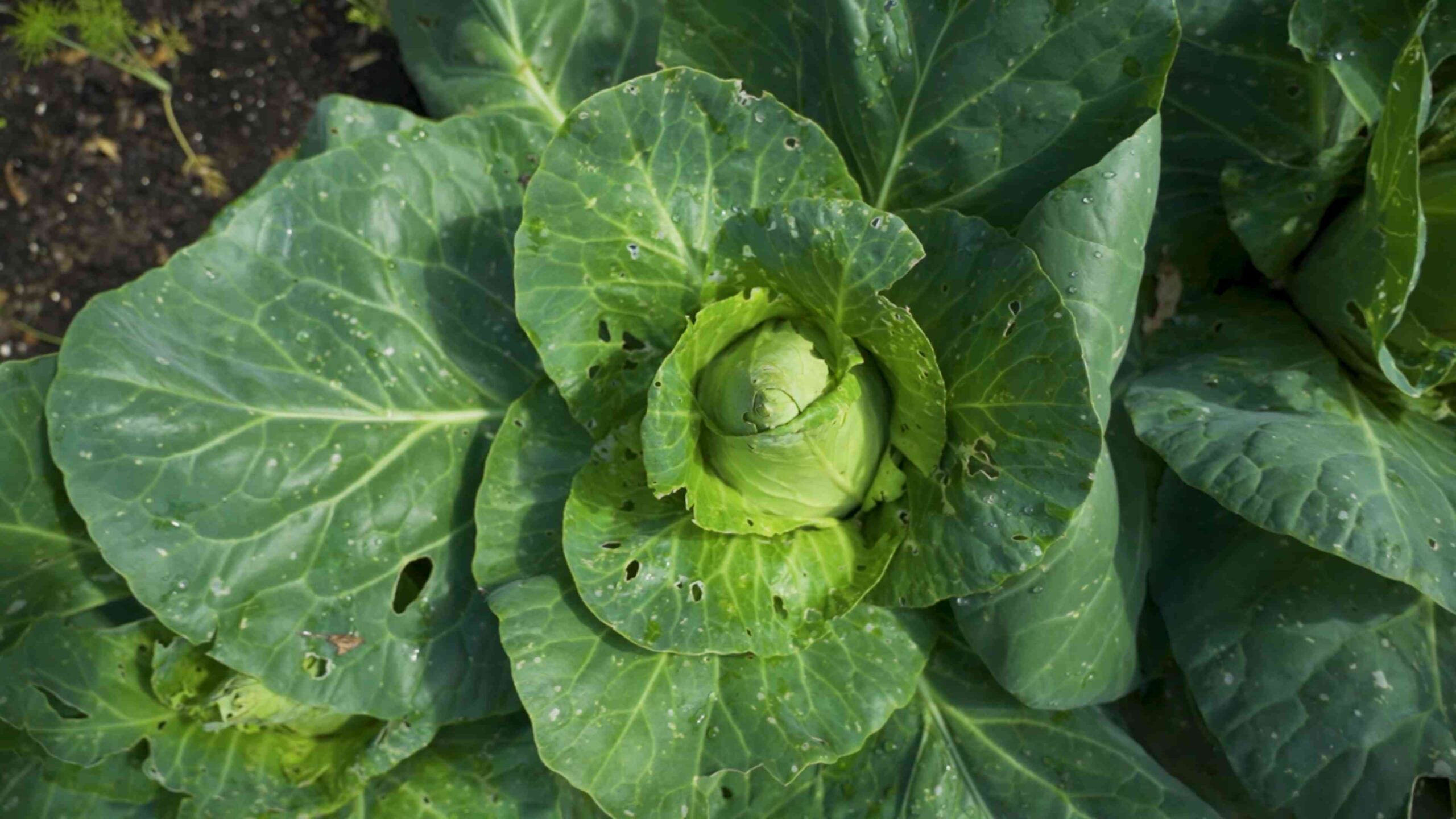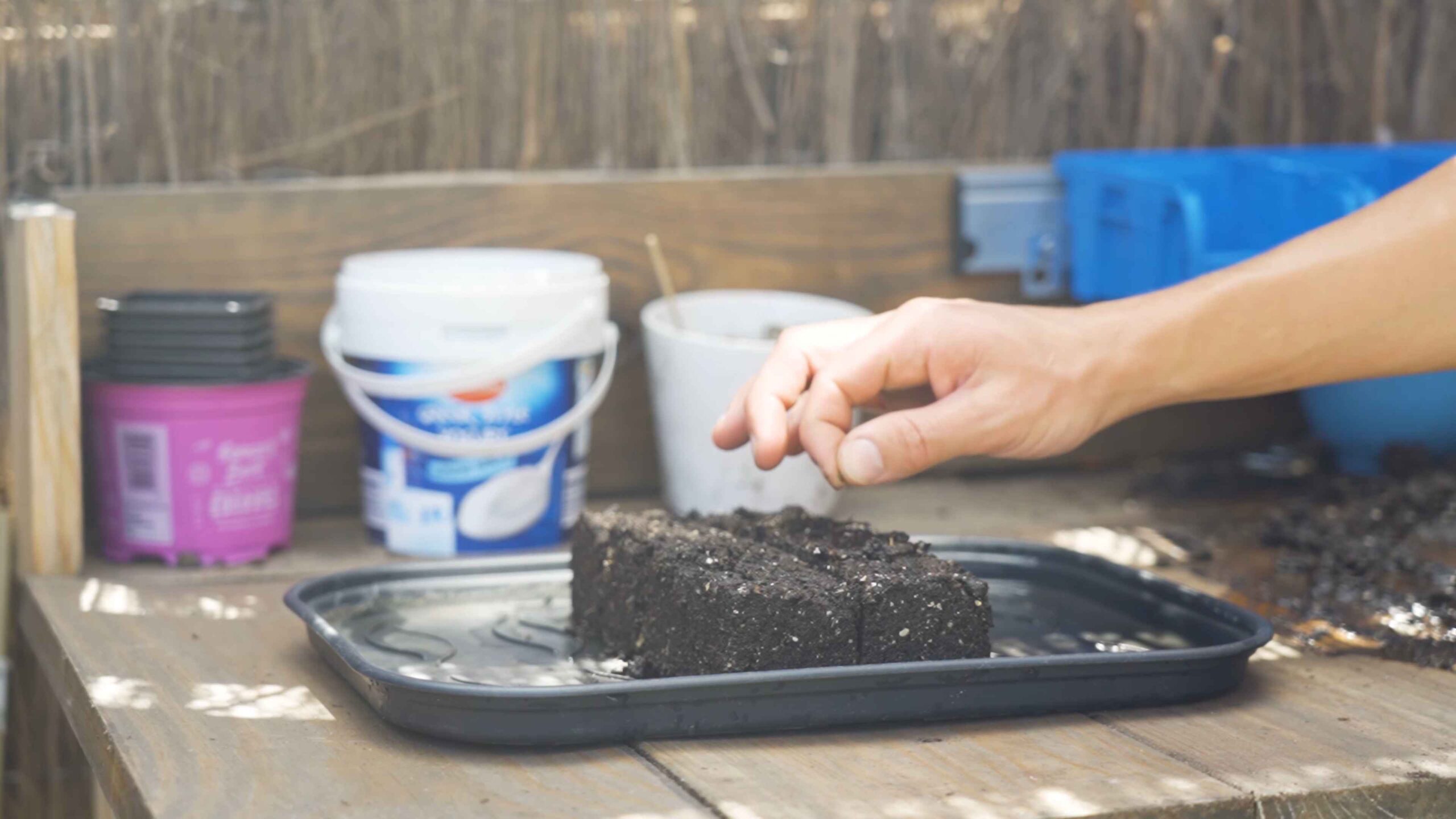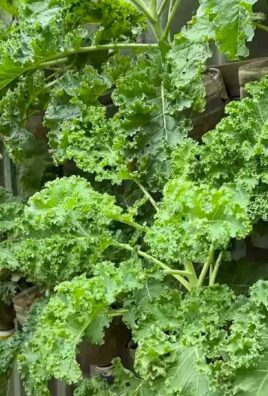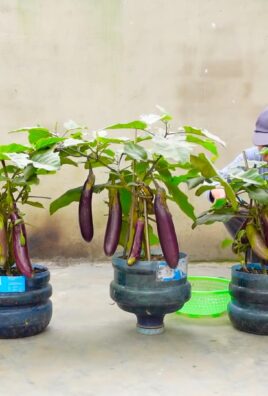Growing pointed cabbage at home can seem daunting, but trust me, it’s more achievable (and rewarding!) than you might think. Have you ever dreamt of strolling through your own backyard, snipping off a perfectly formed, vibrant green pointed cabbage for tonight’s dinner? Imagine the satisfaction of knowing exactly where your food comes from and the delicious, fresh flavor that store-bought cabbage just can’t match.
Cabbage, in general, has a rich history, dating back thousands of years. From ancient Rome, where it was considered a medicinal plant, to its prominent role in European cuisine, cabbage has nourished generations. Pointed cabbage, with its sweeter, more delicate flavor, is a delightful variation that deserves a place in your garden.
But why bother with the effort? Well, in today’s world, knowing how to grow your own food is becoming increasingly important. Not only does it offer a sustainable and cost-effective way to access fresh produce, but it also provides a connection to nature and a sense of accomplishment. Plus, let’s be honest, avoiding those wilted, overpriced cabbages at the supermarket is a definite win! This DIY guide will equip you with all the essential tricks and hacks you need to successfully start growing pointed cabbage at home, even if you’re a complete beginner. So, grab your gardening gloves, and let’s get started!

Growing Pointed Cabbage at Home: A Gardener’s Guide
Hey there, fellow gardening enthusiasts! Ever thought about growing your own pointed cabbage? It’s easier than you might think, and the taste of freshly harvested, homegrown cabbage is simply unbeatable. I’ve been growing pointed cabbage in my backyard for a few years now, and I’m excited to share my tips and tricks with you. Let’s dive in!
Choosing the Right Variety
First things first, let’s talk about varieties. Pointed cabbage comes in a few different types, each with its own unique characteristics. Here are a couple of my favorites:
* ‘Hispi’: This is a classic pointed cabbage variety, known for its sweet flavor and compact size. It’s a great choice for smaller gardens.
* ‘Caraflex’: ‘Caraflex’ is another excellent option, offering good disease resistance and a slightly more elongated head.
When selecting your seeds or seedlings, make sure to choose a variety that’s well-suited to your local climate and growing conditions. Check the seed packet or plant label for specific recommendations.
Starting from Seed vs. Seedlings
You have two main options for getting your pointed cabbage plants started: growing from seed or buying seedlings. Both have their pros and cons.
* Starting from Seed: This gives you more control over the entire growing process and can be more cost-effective. However, it requires more time and effort, and you’ll need to provide the right conditions for germination and early growth.
* Buying Seedlings: This is a quicker and easier option, especially if you’re short on time or space. Just make sure to choose healthy, vigorous seedlings from a reputable nursery.
I personally prefer to start my pointed cabbage from seed indoors, about 6-8 weeks before the last expected frost. This gives them a head start and allows me to control the growing environment.
Preparing the Soil
Cabbage plants are heavy feeders, so they need rich, well-drained soil to thrive. Before planting, amend your soil with plenty of organic matter, such as compost or well-rotted manure. This will improve drainage, add nutrients, and help retain moisture.
Here’s what I do to prepare my soil:
1. Clear the area: Remove any weeds, rocks, or debris from the planting area.
2. Dig in organic matter: Spread a 2-3 inch layer of compost or manure over the soil surface.
3. Till or dig it in: Use a garden fork or tiller to incorporate the organic matter into the top 6-8 inches of soil.
4. Test the pH: Cabbage prefers a slightly acidic soil pH of 6.0-7.0. Use a soil testing kit to check the pH and adjust as needed. You can add lime to raise the pH or sulfur to lower it.
Planting Your Cabbage
Whether you’re planting seeds or seedlings, proper spacing is crucial for healthy growth. Pointed cabbage plants need plenty of room to develop their heads.
* Spacing: Space your plants about 12-18 inches apart in rows that are 24-36 inches apart. This will give them enough room to grow without overcrowding.
Here’s how I plant my cabbage seedlings:
1. Dig a hole: Dig a hole that’s slightly larger than the root ball of the seedling.
2. Remove the seedling: Gently remove the seedling from its container, being careful not to damage the roots.
3. Loosen the roots: Gently loosen the roots of the seedling to encourage them to spread out.
4. Place the seedling: Place the seedling in the hole, making sure that the top of the root ball is level with the soil surface.
5. Fill the hole: Fill the hole with soil and gently firm it around the base of the plant.
6. Water thoroughly: Water the newly planted seedling thoroughly to help it settle in.
Caring for Your Cabbage
Once your cabbage plants are in the ground, it’s important to provide them with the right care to ensure a bountiful harvest.
Watering
Cabbage plants need consistent moisture, especially during hot, dry weather. Water deeply and regularly, aiming to keep the soil consistently moist but not waterlogged. I usually water my cabbage plants every 2-3 days, depending on the weather.
Fertilizing
As I mentioned earlier, cabbage plants are heavy feeders, so they need regular fertilization to thrive. I like to use a balanced fertilizer, such as 10-10-10, applied according to the package directions. You can also use organic fertilizers, such as fish emulsion or compost tea.
Here’s my fertilizing schedule:
1. At planting: Apply a starter fertilizer solution to help the seedlings get established.
2. 3-4 weeks after planting: Side-dress the plants with a balanced fertilizer.
3. Every 4-6 weeks: Continue to side-dress the plants with fertilizer throughout the growing season.
Weeding
Weeds can compete with your cabbage plants for nutrients and water, so it’s important to keep the area around them weed-free. Hand-pull weeds regularly or use a hoe to cultivate the soil. You can also apply a layer of mulch to help suppress weed growth.
Pest and Disease Control
Cabbage plants are susceptible to a variety of pests and diseases, including cabbage worms, aphids, and clubroot. Here are some tips for preventing and controlling these problems:
* Cabbage Worms: These pesky caterpillars can quickly devour your cabbage leaves. Inspect your plants regularly for signs of infestation and hand-pick any worms you find. You can also use Bacillus thuringiensis (Bt), a natural insecticide, to control cabbage worms.
* Aphids: These tiny insects can suck the sap from your cabbage leaves, causing them to become distorted and yellowed. Spray aphids with a strong stream of water or use insecticidal soap.
* Clubroot: This soilborne disease can cause the roots of your cabbage plants to become swollen and distorted. To prevent clubroot, plant resistant varieties and practice crop rotation.
I always try to use organic pest and disease control methods whenever possible. This helps protect the environment and ensures that my cabbage is safe to eat.
Harvesting Your Cabbage
Pointed cabbage is typically ready to harvest about 60-80 days after planting. The heads should be firm and compact, and the leaves should be tightly wrapped.
Here’s how I harvest my pointed cabbage:
1. Check for ripeness: Gently squeeze the head of the cabbage. If it feels firm and solid, it’s ready to harvest.
2. Cut the head: Use a sharp knife to cut the head of the cabbage from the stem, leaving a few outer leaves attached.
3. Store the cabbage: Store the harvested cabbage in the refrigerator for up to 2 weeks.
Enjoying Your Homegrown Cabbage
Now comes the best part: enjoying the fruits (or rather, vegetables) of your labor! Pointed cabbage is incredibly versatile and can be used in a variety of dishes.
Here are some of my favorite ways to use homegrown pointed cabbage:
* Salads: Shredded pointed cabbage adds a delicious crunch to salads.
* Slaws: Pointed cabbage makes a fantastic base for coleslaw.
* Stir-fries: Add chopped pointed cabbage to stir-fries for a healthy and flavorful boost.
* Soups and stews: Pointed cabbage can be added to soups and stews for extra nutrients and flavor.
* Roasted: Roasted pointed cabbage is a simple and delicious side dish.
Troubleshooting
Even with the best care, you might encounter some challenges when growing pointed cabbage. Here are a few common problems and how to address them:
* Heads not forming: This can be caused by a lack of nutrients, water, or sunlight. Make sure your plants are getting enough of all three.
* Bolting: Bolting occurs when the plant prematurely flowers, usually due to stress. To prevent bolting, keep your plants well-watered and fertilized, and protect them from extreme temperatures.
* Splitting heads: This can happen when the cabbage heads grow too quickly after a period of drought. Water your plants consistently to prevent splitting.
Tips for Success
Here are a few extra tips to help you succeed in growing pointed cabbage at home:
* Choose the right location: Plant your cabbage in a sunny spot with well-drained soil.
* Start with healthy plants: Whether you’re starting from seed or buying seedlings, make sure to choose healthy, vigorous plants.
* Water regularly: Cabbage plants need consistent moisture, especially during hot, dry weather.
* Fertilize regularly: Cabbage plants are heavy feeders, so they need regular fertilization to thrive.
* Protect from pests and diseases: Inspect your plants regularly for signs of pests and diseases and take action promptly.
*

Conclusion
So, there you have it! Growing pointed cabbage at home isn’t just a gardening project; it’s an investment in fresh, flavorful, and healthy eating. We’ve walked you through the steps, from selecting the right seeds to harvesting your own perfectly formed pointed cabbages. But why is this DIY trick a must-try?
Firstly, the taste difference is undeniable. Store-bought cabbages, often transported long distances and stored for extended periods, simply can’t compare to the crisp, sweet flavor of a freshly harvested, homegrown pointed cabbage. You control the growing conditions, ensuring optimal taste and texture.
Secondly, you’re in charge of what goes into your food. No more worrying about pesticides or herbicides. Growing your own pointed cabbage allows you to use organic methods, ensuring a healthy and safe product for you and your family. This peace of mind is invaluable.
Thirdly, it’s incredibly rewarding! There’s something deeply satisfying about nurturing a plant from seed to harvest. Watching your pointed cabbage grow and develop is a testament to your hard work and dedication. It’s a connection to nature that’s often missing in our modern lives.
But the journey doesn’t end here! Feel free to experiment with different varieties of pointed cabbage. Some are sweeter, some are more compact, and some are better suited for specific climates. Try growing ‘Hispi’ for its early maturity or ‘Caraflex’ for its conical shape and mild flavor.
Consider companion planting to enhance your pointed cabbage’s growth and deter pests. Marigolds, nasturtiums, and dill are excellent choices. They not only add beauty to your garden but also provide natural pest control.
For those with limited space, don’t be discouraged! Pointed cabbage can be successfully grown in containers. Choose a large pot with good drainage and use a high-quality potting mix. Regular watering and fertilization are essential for container-grown cabbages.
And if you’re feeling adventurous, try fermenting your pointed cabbage to make sauerkraut or kimchi. These fermented foods are packed with probiotics and offer a delicious and healthy way to preserve your harvest.
Ultimately, growing pointed cabbage at home is a journey of discovery and learning. It’s a chance to connect with nature, improve your diet, and enjoy the satisfaction of growing your own food. We encourage you to give it a try! Share your experiences, successes, and challenges with us in the comments below. Let’s build a community of passionate home gardeners who are dedicated to growing their own fresh, flavorful pointed cabbage. We can’t wait to hear your stories and see your beautiful cabbages!
Frequently Asked Questions (FAQ)
What is the best time of year to start growing pointed cabbage?
The best time to start growing pointed cabbage depends on your climate. In general, pointed cabbage is a cool-season crop, so it thrives in spring and fall. For a spring harvest, start seeds indoors 6-8 weeks before the last expected frost. For a fall harvest, start seeds outdoors in mid-summer. Check your local frost dates and adjust your planting schedule accordingly. In warmer climates, you may be able to grow pointed cabbage throughout the winter.
How much sunlight does pointed cabbage need?
Pointed cabbage requires at least 6 hours of direct sunlight per day. Choose a sunny location in your garden where your plants will receive ample sunlight. If you’re growing pointed cabbage in containers, make sure to place them in a sunny spot. Insufficient sunlight can result in leggy plants and smaller heads.
What type of soil is best for growing pointed cabbage?
Pointed cabbage prefers well-drained, fertile soil with a pH of 6.0 to 7.0. Amend your soil with compost or other organic matter to improve drainage and fertility. Avoid heavy clay soils, as they can become waterlogged and inhibit growth. A soil test can help you determine the pH of your soil and identify any nutrient deficiencies.
How often should I water my pointed cabbage plants?
Water your pointed cabbage plants regularly, especially during dry periods. Aim to keep the soil consistently moist but not waterlogged. Water deeply at the base of the plants, avoiding wetting the foliage, which can promote disease. Mulching around the plants can help retain moisture and suppress weeds.
What are some common pests and diseases that affect pointed cabbage?
Common pests that affect pointed cabbage include cabbage worms, aphids, and flea beetles. Cabbage worms can be controlled with Bacillus thuringiensis (Bt), a natural insecticide. Aphids can be washed off with a strong stream of water or controlled with insecticidal soap. Flea beetles can be deterred with row covers. Common diseases include clubroot and black rot. Clubroot can be prevented by maintaining a soil pH of 7.0 or higher and practicing crop rotation. Black rot can be prevented by using disease-free seeds and avoiding overhead watering.
How do I know when my pointed cabbage is ready to harvest?
Pointed cabbage is ready to harvest when the head is firm and compact. The size of the head will vary depending on the variety, but generally, it should be about 6-8 inches long. Gently squeeze the head to check for firmness. If it feels solid, it’s ready to harvest. Use a sharp knife to cut the head from the stem, leaving a few outer leaves intact.
Can I grow pointed cabbage in containers?
Yes, pointed cabbage can be successfully grown in containers. Choose a large pot with good drainage, at least 12 inches in diameter. Use a high-quality potting mix and fertilize regularly. Container-grown cabbages may require more frequent watering than those grown in the ground.
How can I prevent my pointed cabbage from splitting?
Splitting can occur when pointed cabbage heads grow too quickly due to excessive watering or fertilization. To prevent splitting, water consistently but avoid overwatering. Avoid fertilizing with high-nitrogen fertilizers, which can promote rapid growth. If you notice your cabbage heads starting to split, you can try twisting the head slightly to break some of the roots, which will slow down growth.
Can I save seeds from my pointed cabbage?
Saving seeds from pointed cabbage can be challenging because cabbage is a biennial plant, meaning it takes two years to produce seeds. You would need to overwinter the plant and allow it to flower and produce seeds in the second year. Additionally, cabbage is cross-pollinated, so the seeds may not be true to type if other brassicas are growing nearby. For best results, purchase seeds from a reputable source.
What are some good companion plants for pointed cabbage?
Good companion plants for pointed cabbage include marigolds, nasturtiums, dill, rosemary, thyme, and chamomile. These plants can help deter pests, attract beneficial insects, and improve the overall health of your garden. Avoid planting pointed cabbage near other brassicas, such as broccoli, cauliflower, and kale, as they can attract the same pests and diseases.





Leave a Comment